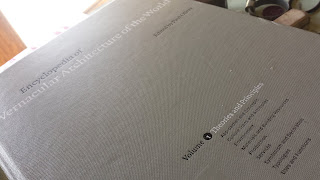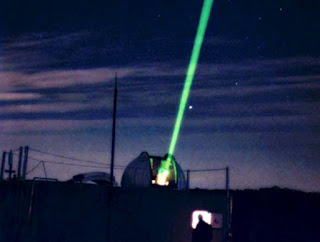REVIEW: Oliver, P. (1998) ‘Encyclopaedia of Vernacular Architecture of the World’, Cambridge University Press, Cambridge.
REVIEW:
Oliver, P. (1998) ‘Encyclopaedia of Vernacular Architecture of the World’, Cambridge University Press, Cambridge.
THIS REVIEW IS OF SMALL SECTIONS OF THE ENCYCLOPAEDIA.
Though out of print, this tome of vernacular architecture has been well received by large architecural bodies such as RIBA. Oliver’s long, no doubt both frustrating and enlightening 3 volumes cover a vast selection of world vernacular, boasting a massive amount of contributors. Who, themselves; step beyond the world of architecture.
The preface and introduction outline that it has been exceptionally difficult to define the term ‘vernacular architecture’ and give a stern warning that the industry trend that popularizes the term, often does it a disservice. As ‘vernacular’ originally stemmed from an egocentric self-perception of colonial whites, who early in understanding ‘vernacular’ identified many of the buildings as ‘primitive’ and ‘tribal’. This ideal of what vernacular is has sadly sustained itself in much modern research, yet does not identify with the cognitive acuteness of design that becomes prevalent when the body of vernacular is understood from the standpoint of its creation.
This inadvertently identifies a truth behind vernacular, that, in the vast majority of other research that has been looking into thusfar is: Vernacular architecture does not represent anything more than the most common construction ideology within a region.
That understanding of vernacular cuts a line between what is ‘traditional’ ‘rural’ ‘cultural’ ‘contemporary’ ‘religious’ ‘serendipitous’. As, it does not articulate the general understanding of the populace that ‘vernacular’ represents to our psyche something that is more akin to ‘the hut’ or village dwelling. It is an understanding that takes from the picturesque desire of those advocating vernacular.
In this way; it is also an understanding that undermines ‘neo-vernacular’ because as an aesthetic design agenda, it nominates that unless ‘neo-vernacular’ is produced en-masse, it has no validity to call itself by it’s elected title. Because, essentially; a contemporary design attached to a welsh dwelling (for instance) is only a contemporary interpretation of a welsh vernacular. It is not, in itself: vernacular, unless the cosmogony of the design, material, ideal was then picked up by a vast amount of the community in wales.
This makes an interesting conversation come to the fore when illiciting the concept of vernacular in Victoria, Australia. Whose description in the Encyclopaedia covers the Australian development of cavity wall construction and MRTFC (Multi-Residential-Timber-Frame-Construction) that purpotedly developed from a system of French cool rooms. It also covers a method of lightweight roof cladding from a french tile system developed for sub-tropical climates. Later, post war, the roof cladding was developed within the country and importation stopped.
As such, what is covered in the encyclopaedia, is a vast sum of, as it describes; ‘structures still inhabited in he 20th century’ but it does not support current notions of what vernacular is.
This means that the responsibility of vernacular is not on architects, so much as (particularily in melbourne) it rests on the shoulders of developers and bulk or volume builders. Including the development of sky-scrapers.
This opens for research into the direction of ‘vernacular’ as influenced by research into the requirements discovered within the heritage of vernacular architecture, be it: cosmological, anthropomorphic, ontological, cognitive, aesthetic, metaphysical, and philosophical. I am certain I have missed others. Yet; the scope remains that if the industry cannot take into its breadth, any design strategy born from these traits, then whatever architects propose:
Material, industrial, aesthetic, cosmological, is no matter how visually pleasing, or picturesque – does nothing more than answer vernacular, but is not apart of vernacular as a whole.
Author: Thomas Barker.
Arch.Angle.Studios
Melbourne, Victoria,
Australia
Oliver, P. (1998) ‘Encyclopaedia of Vernacular Architecture of the World’, Cambridge University Press, Cambridge.
THIS REVIEW IS OF SMALL SECTIONS OF THE ENCYCLOPAEDIA.
Though out of print, this tome of vernacular architecture has been well received by large architecural bodies such as RIBA. Oliver’s long, no doubt both frustrating and enlightening 3 volumes cover a vast selection of world vernacular, boasting a massive amount of contributors. Who, themselves; step beyond the world of architecture.
The preface and introduction outline that it has been exceptionally difficult to define the term ‘vernacular architecture’ and give a stern warning that the industry trend that popularizes the term, often does it a disservice. As ‘vernacular’ originally stemmed from an egocentric self-perception of colonial whites, who early in understanding ‘vernacular’ identified many of the buildings as ‘primitive’ and ‘tribal’. This ideal of what vernacular is has sadly sustained itself in much modern research, yet does not identify with the cognitive acuteness of design that becomes prevalent when the body of vernacular is understood from the standpoint of its creation.
This inadvertently identifies a truth behind vernacular, that, in the vast majority of other research that has been looking into thusfar is: Vernacular architecture does not represent anything more than the most common construction ideology within a region.
That understanding of vernacular cuts a line between what is ‘traditional’ ‘rural’ ‘cultural’ ‘contemporary’ ‘religious’ ‘serendipitous’. As, it does not articulate the general understanding of the populace that ‘vernacular’ represents to our psyche something that is more akin to ‘the hut’ or village dwelling. It is an understanding that takes from the picturesque desire of those advocating vernacular.
In this way; it is also an understanding that undermines ‘neo-vernacular’ because as an aesthetic design agenda, it nominates that unless ‘neo-vernacular’ is produced en-masse, it has no validity to call itself by it’s elected title. Because, essentially; a contemporary design attached to a welsh dwelling (for instance) is only a contemporary interpretation of a welsh vernacular. It is not, in itself: vernacular, unless the cosmogony of the design, material, ideal was then picked up by a vast amount of the community in wales.
This makes an interesting conversation come to the fore when illiciting the concept of vernacular in Victoria, Australia. Whose description in the Encyclopaedia covers the Australian development of cavity wall construction and MRTFC (Multi-Residential-Timber-Frame-Construction) that purpotedly developed from a system of French cool rooms. It also covers a method of lightweight roof cladding from a french tile system developed for sub-tropical climates. Later, post war, the roof cladding was developed within the country and importation stopped.
As such, what is covered in the encyclopaedia, is a vast sum of, as it describes; ‘structures still inhabited in he 20th century’ but it does not support current notions of what vernacular is.
This means that the responsibility of vernacular is not on architects, so much as (particularily in melbourne) it rests on the shoulders of developers and bulk or volume builders. Including the development of sky-scrapers.
This opens for research into the direction of ‘vernacular’ as influenced by research into the requirements discovered within the heritage of vernacular architecture, be it: cosmological, anthropomorphic, ontological, cognitive, aesthetic, metaphysical, and philosophical. I am certain I have missed others. Yet; the scope remains that if the industry cannot take into its breadth, any design strategy born from these traits, then whatever architects propose:
Material, industrial, aesthetic, cosmological, is no matter how visually pleasing, or picturesque – does nothing more than answer vernacular, but is not apart of vernacular as a whole.
Author: Thomas Barker.
Arch.Angle.Studios
Melbourne, Victoria,
Australia
Discover More:







ealgeAfragso Melinda Adams https://wakelet.com/wake/qPAItFFKBQRovA192xfM5
ReplyDeleteasaratba